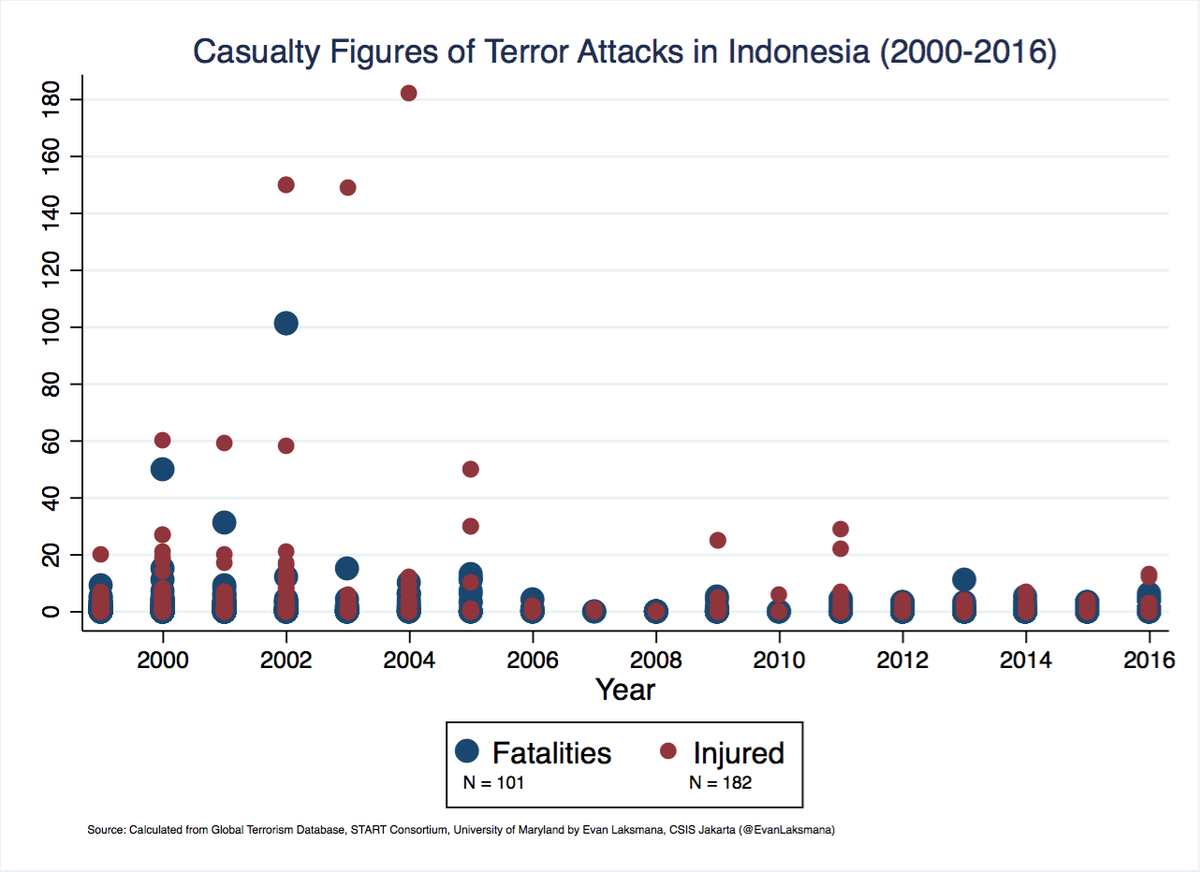Without much fanfare, Indonesia quietly issued Government Regulation (PP) No. 4/2018 on Airspace Security. The PP was meant to further establish the governance of Indonesia's airspace (per Law No. 1/2009 on aviation) <thread on #ADIZ> 1/ 
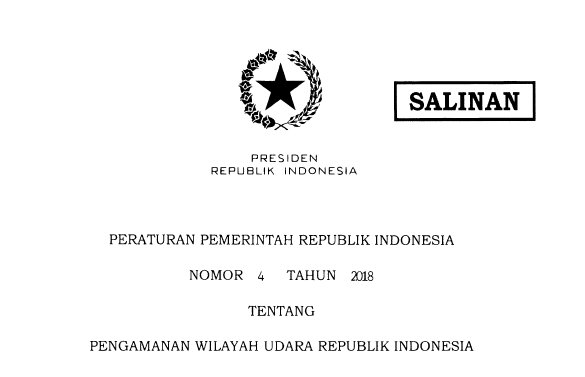
2/ The PP basically establishes the governance of Indonesia's airspace, who manages what and how as well as the procedures for certain scenarios (e.g. how to intercept a foreign aircraft, admin fines, etc.). In that sense, the PP is a generic framework for airspace management
3/ what is interesting is possible creation of Air Defense Identification Zone (#ADIZ) (art. 6) in addition to the establishment of prohibited and restricted areas (for the latter, PP said "govt. establishes..." and for ADIZ, it says "govt. *could* establish..." 

4/ Indonesia's possible ADIZ (art. 9) is defined as: "certain air spaces above land/or water established to identify aircraft for the purposes of state defense & security" and further "falls within the country's Airspace and Jurisdictional Airspace." 

5/ which areas are those? Art. 1 defines Airspace as Indonesia's territorial airspace and Jurisdictional Airspace are those areas that covers the country's Exclusive Economic Zone (EEZ), Continental Shelf, and Contiguous Zones (presumably per UNCLOS). 
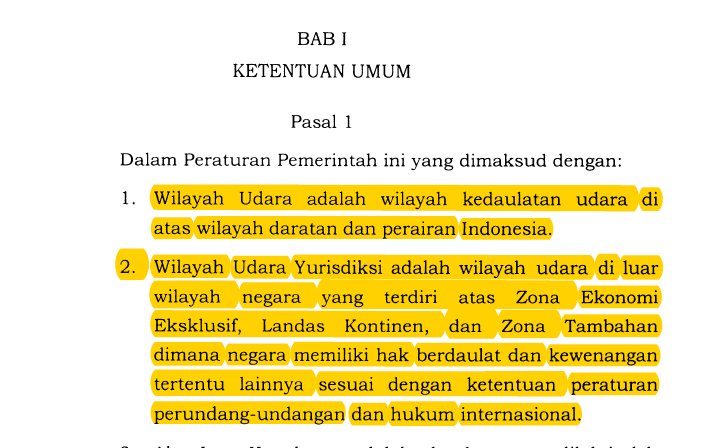
6/ Art. 10 requires all foreign aircrafts to have diplomatic clearance, security clearance and flight approval to pass through Indonesian Airspace and violators could be fined as much as five billion IDR (roughly USD 363 thousand). 
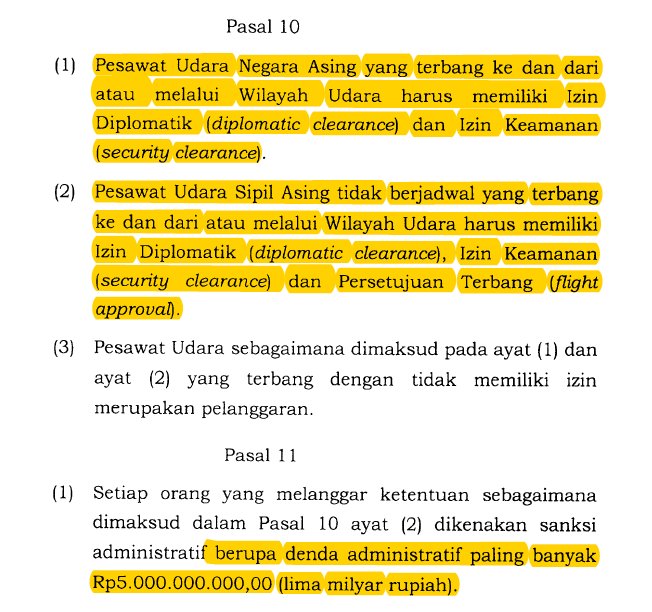
7/ unscheduled foreign military and civilian aircraft flying in Indonesia's ADIZ within Jurisdictional Airspace (i.e. above EEZ, Continental Shelf, Contiguous Zone) must report flight plans to aviation guide personnel (Those that pass the ADIZ on Airspace follows Art 10 above) 
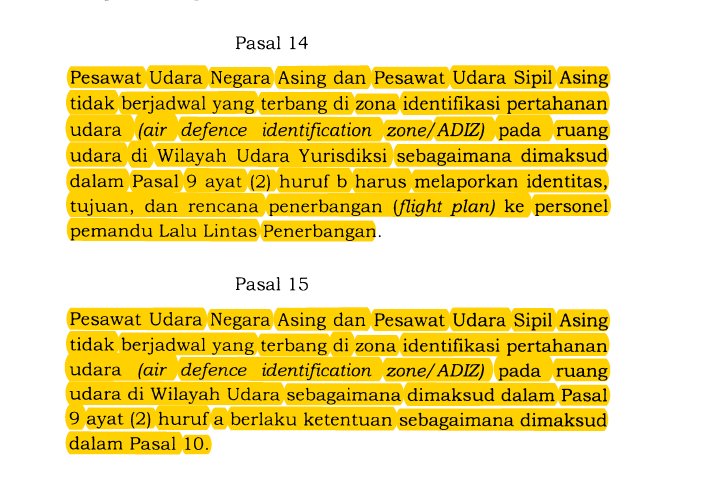
8/ The Indonesian Air Force (TNI-AU) could intercept ADIZ violators (i.e. w/o diplomatic and security clearances and flight approval) and force them to land (per Art. 28, although specific steps & procedures are laid out in Art. 31-38) 
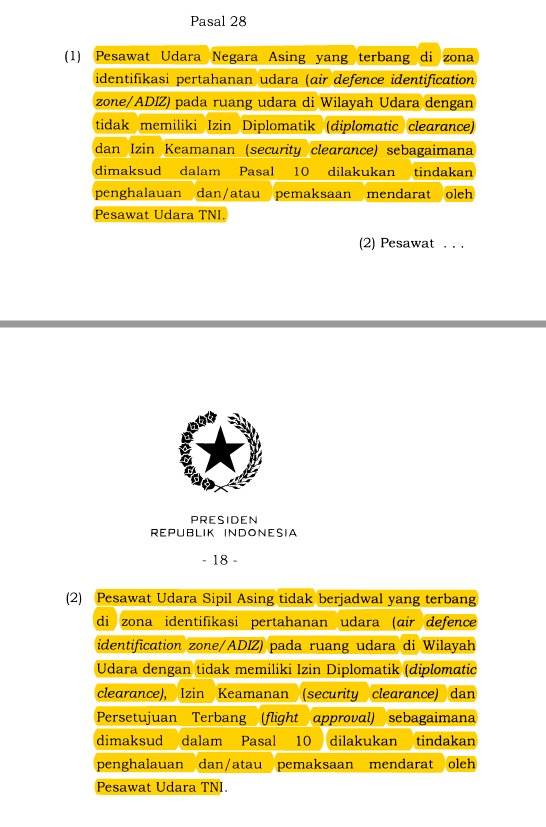
9/ ADIZ plans have been in the pipelines since the waning days of SBY's second term and many have complained that admin fines for violators have been to low. It also follows Jokowi's calling card of "Strong and Sovereign Indonesia"...
10/ With Jokowi's Sea Policy in place and Fisheries Ministry pushing hard on maritime sovereignty, it makes sense that "Airspace Sovereignty" is the next agenda; esp. now that current TNI Commander ACM Hadi Tjahjanto is also increasingly solidifying his command.
11/ The debate with Singapore over Riau/Natuna (bordering #SouthChinaSea) Flight Information Region (FIR) in recent years is also looming in the background when Jokowi admin pushed the PP out.
12/ The key issue is whether Indonesian aviation authorities can safely manage the airspace and whether the Air Force can successfully enforce the new PP and ADIZ if and when its becomes fully operational.
13/ TNI-AU is only starting to modernize its platforms and its roughly 8 squadrons of fighter/ground attack aircraft are often too expensive to operate regularly (esp for air patrols?). Also, KFX plans are in a limbo and next Sukhoi batch won't come until later this year.
14/ What would an operational Indonesian ADIZ mean for regional ADIZ declarations (esp. China's)? To what extent has Jakarta consulted its neighbors (primarily SG, MY, PHL) on ADIZ plans? Or is this PP (and ADIZ) merely another domestic policy move ahead of 2019 elections? <end>
• • •
Missing some Tweet in this thread? You can try to
force a refresh




